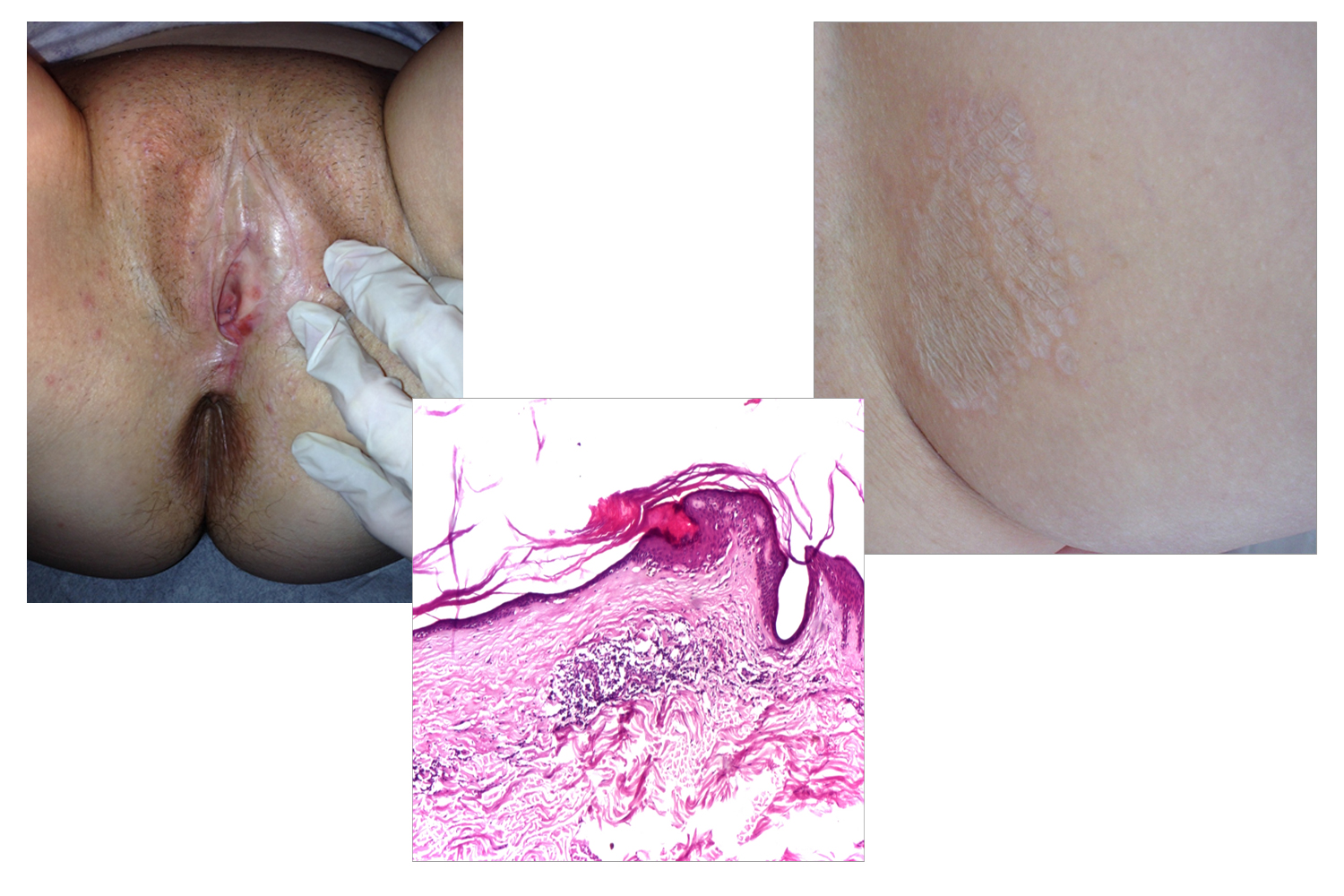2376-0249
Case Blog - International Journal of Clinical & Medical Images (2014) Volume 1, Issue 2

Author(s): Laura Statescu, Dan Vata
Lichen sclerosus is a chronic inflammatory disorder, of unknown etiology, involving the skin and mucosa, affecting women, males and children. The site of predilection is anogenital area, but other usual involvements are cutaneous and bucal area. Unusual involvements can be pharyngeal, laryngeal etc. The pathogenically mechanism involves lymphocyte-mediated dermatosis with a presumed autoimmune mechanism.
Case presentation
We present the case of a 57-year old woman, from urban area, who describes the onset of lesions 3 years earlier, with vulval discomfort, but also with skin atrophic lesions. Case history releal mitral insufficiency, possibly aortic stenosis, supraventricular extrasystolic arrhytmia, class II NYHA heart failure.
Clinical examination: Whitening and atrophy of the vulval mucosa, especially labia majora and in the anal and perianal areas, where erosions after rupture of bullae were also presented (Figure 1). On the thighs (superointernal part), yellowish-white plaques of variable size (5-6 mm to 8-10 cm) round or oval with a slightly wrinkled (Figure 2).
Histology Thigh biopsy: Atrophic, linear epidermis, discontinuous parakeratosis, in the basal layer isolated areas of cell liquenification; the supperficial dermis homogenized, hyalinized, with a lymphohistiocytic infiltrate in the middle dermis (Figure 3). Treatment Topical, with Pimecrolimus cream 1%. Evolution After 12 weeks, the evident amelioration of lesions, when was discontinued, and the patient have only emollients and trophic preparations.
Discussion Treatment in lichen sclerosus includes a great variety of topical (superpotent corticosteroids, oestrogen or testosterone or progesterone, tacrolimus, ciclosporin) or systemic medicaments (retinoids; vitamin E, hydroxychroloquine etc.); intralesional triamcinolone; surgical procedures, laser, photodynamic therapy, cryotherapy etc [1, 2, 3, 4]. Topical pimecrolimus cream 1%, acting by the inhibition of T-cell activation and synthesis of proinflammatory cytokines by action on calcineurin is a choose [2]. The surveillance must be made with attention because of the possible association with malignancies.
References
Corresponding author
Laura Statescu
Dan Vata, Dermatology Department
University of Medicine and Pharmacy
Romania
 Awards Nomination
Awards Nomination

